A successful Revenue Cycle Management (RCM) process is essential for any healthcare organization aiming to maintain financial stability and enhance operational efficiency. RCM encompasses the entire life cycle of a patient’s account, from initial appointment scheduling to the final payment of the balance. By understanding and optimizing each component of the RCM process, healthcare providers can ensure that they are effectively managing their revenue streams.
This blog will delve into the critical revenue cycle components, providing a comprehensive guide to achieving a seamless RCM process
Patient Registration and Demographics
The first step in the RCM process is patient registration and capturing accurate demographic information. This stage involves collecting essential data such as the patient’s name, address, date of birth, insurance details, and contact information.
Ensuring that this information is accurate and up-to-date is crucial, as errors at this stage can lead to claim denials and delays in payment. Investing time in thorough patient registration helps in reducing errors downstream and sets the foundation for a successful revenue cycle.
Authorization and Pre-authorization
Authorization and pre-authorization are vital steps in the RCM process, especially for procedures and services that require prior approval from the patient’s insurance provider. This step involves verifying the necessity of the medical services to be rendered and ensuring that they are covered under the patient’s insurance plan.
Failing to obtain proper authorization can result in claim denials, leaving the healthcare provider without reimbursement for services provided. By efficiently managing authorizations, healthcare organizations can minimize financial risk and ensure smooth reimbursement.
Coding and Charge Capture
Accurate coding and charge capture are at the heart of the RCM process. Medical coding involves translating healthcare services, procedures, and diagnoses into standardized codes (such as ICD-10, CPT, and HCPCS). Charge capture ensures that all services provided are accurately recorded and billed.
Errors in coding can lead to claim rejections, underpayments, or overpayments. Implementing robust coding practices and regular audits can help in maintaining accuracy and compliance with billing regulations, ultimately improving the efficiency of the revenue cycle

Claim Submission and Follow-up
Once coding and charge capture are complete, the next step is claim submission. This involves sending the claims to the appropriate insurance companies for reimbursement. Timely and accurate claim submission is critical to avoid delays and denials.
After submission, it is essential to follow up on the claims to ensure they are processed and paid promptly. Regular follow-up helps in identifying and addressing any issues that arise, such as missing information or discrepancies, thereby reducing the time taken to receive payments.
Payment Posting and AR Management
Payment posting is the process of recording payments received from insurance companies and patients into the healthcare provider’s accounting system. Accurate payment posting ensures that the organization’s financial records are up-to-date and reflects the actual revenue received.
Accounts Receivable (AR) management involves tracking and managing outstanding balances to ensure timely collection of payments. Effective AR management is crucial for maintaining cash flow and financial stability. By monitoring AR closely, healthcare providers can identify overdue accounts and take necessary actions to expedite collections.
Denial Management
Denial management is a proactive approach to addressing and resolving claim denials. Denials can occur for various reasons, such as incorrect coding, missing information, or lack of authorization. Effective denial management involves analyzing denial trends, identifying root causes, and implementing corrective measures to prevent future denials.
By reducing the rate of denials, healthcare providers can improve their reimbursement rates and minimize revenue loss. Establishing a dedicated denial management team or utilizing specialized software can significantly enhance the effectiveness of this component of the RCM process.
Patient Billing and Collections
Patient billing and collections are critical components of the RCM process, focusing on the patient’s financial responsibility for services rendered. This step involves generating and sending accurate bills to patients, followed by efficient collection of payments. Clear communication and transparency in billing can enhance patient satisfaction and encourage timely payments.
Implementing flexible payment options and providing patient support for billing inquiries can further streamline the collections process. Effective patient billing and collections help in reducing outstanding balances and improving overall revenue.
RCM Technology and Automation

Incorporating advanced technology and automation into the RCM process can significantly enhance efficiency and accuracy. RCM technology solutions, such as electronic health records (EHR) systems, billing software, and automated claim submission tools, streamline various components of the revenue cycle.
Automation reduces manual errors, accelerates processing times, and provides real-time insights into the financial health of the organization. Investing in robust RCM technology can lead to improved revenue cycle performance and better resource allocation.
Choose Our RCM Solutions
A successful RCM process involves meticulously managing each revenue cycle component, from patient registration to payment posting and collections.
Ready to optimize your RCM process with NFV Healthcare Group? Contact us today to learn how our comprehensive RCM solutions can help your healthcare organization achieve financial success and operational excellence.

